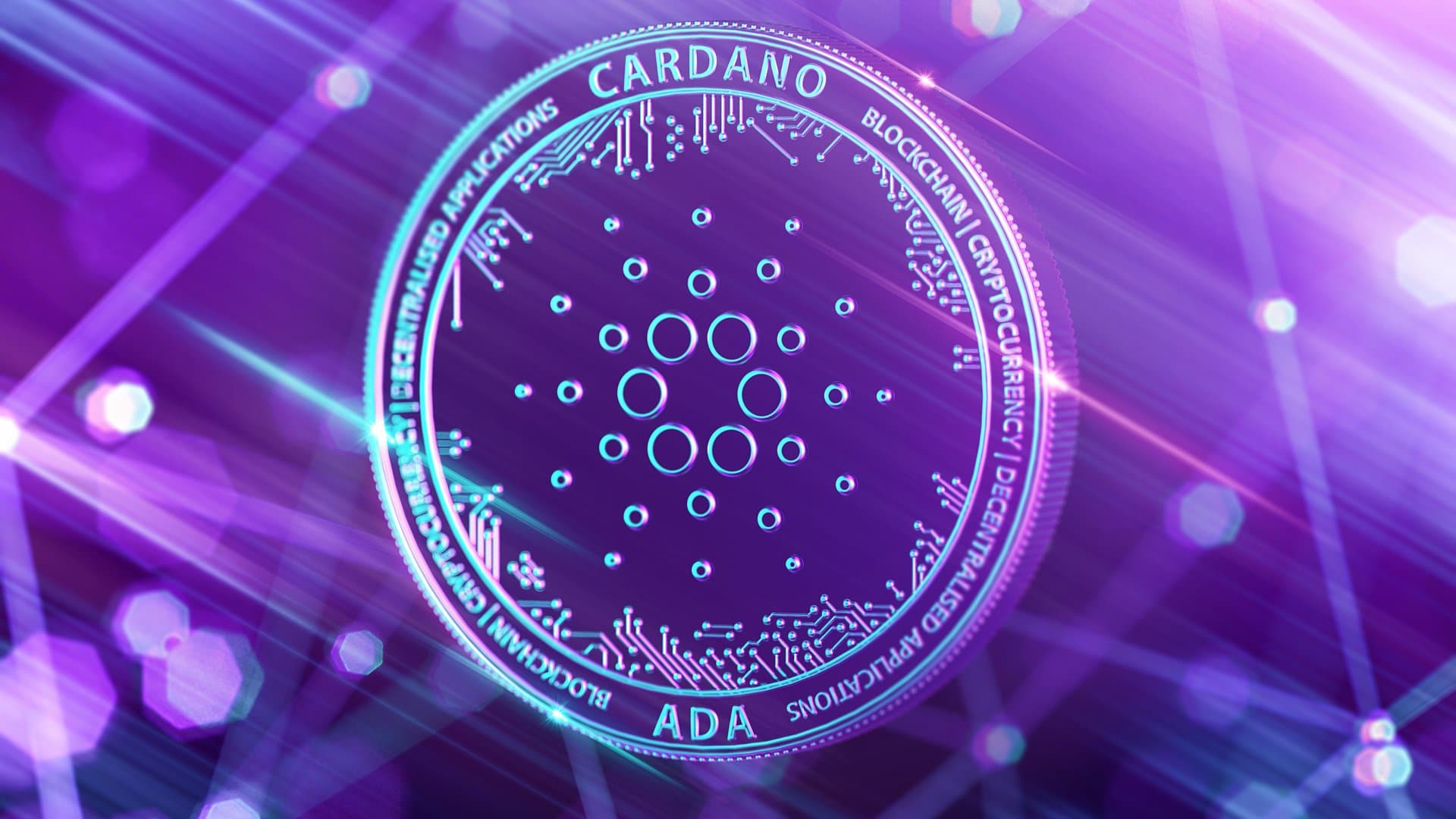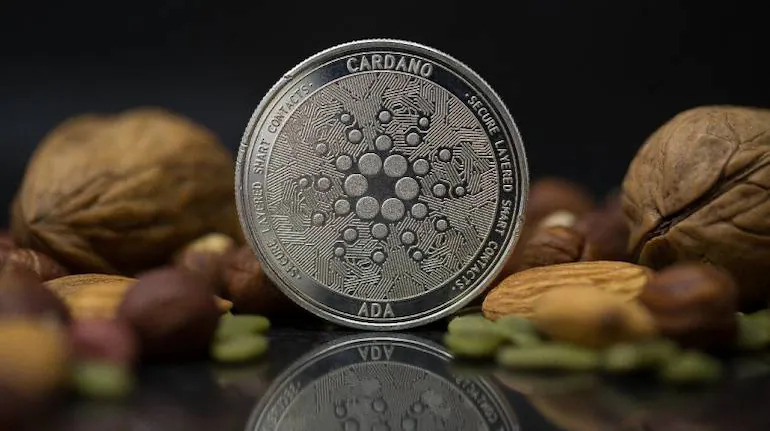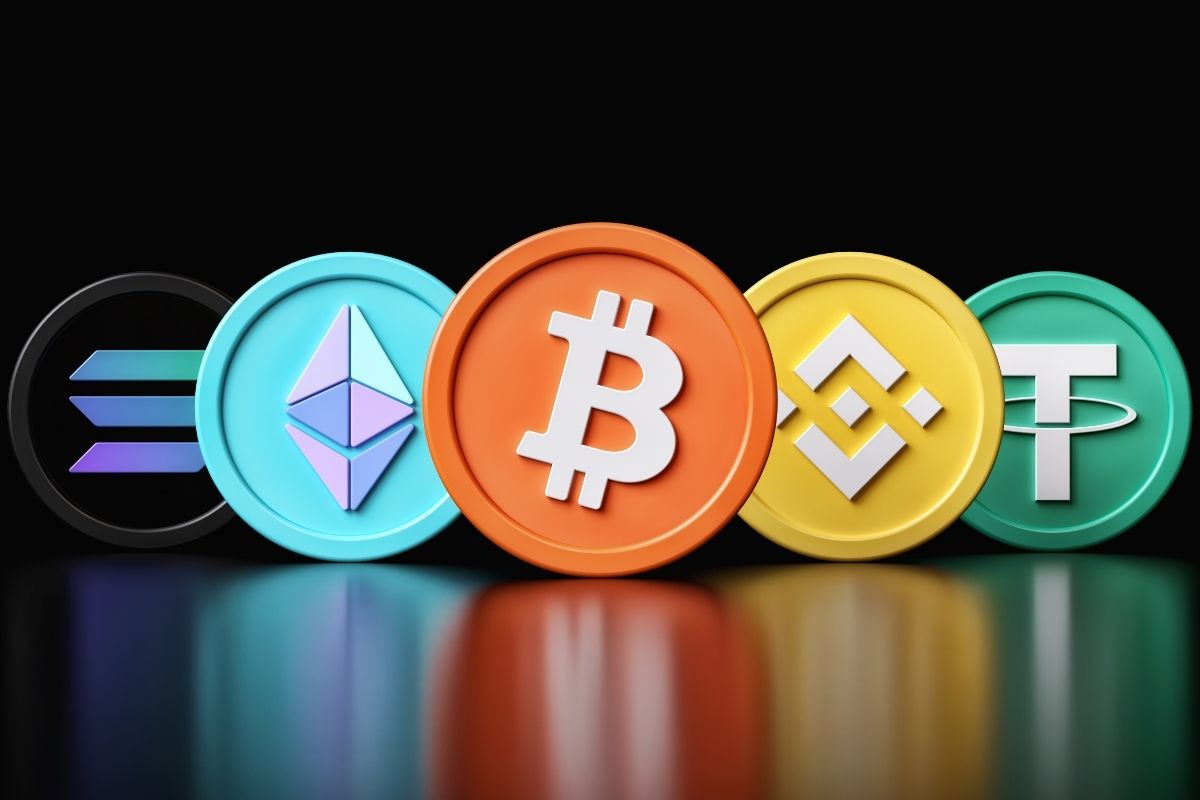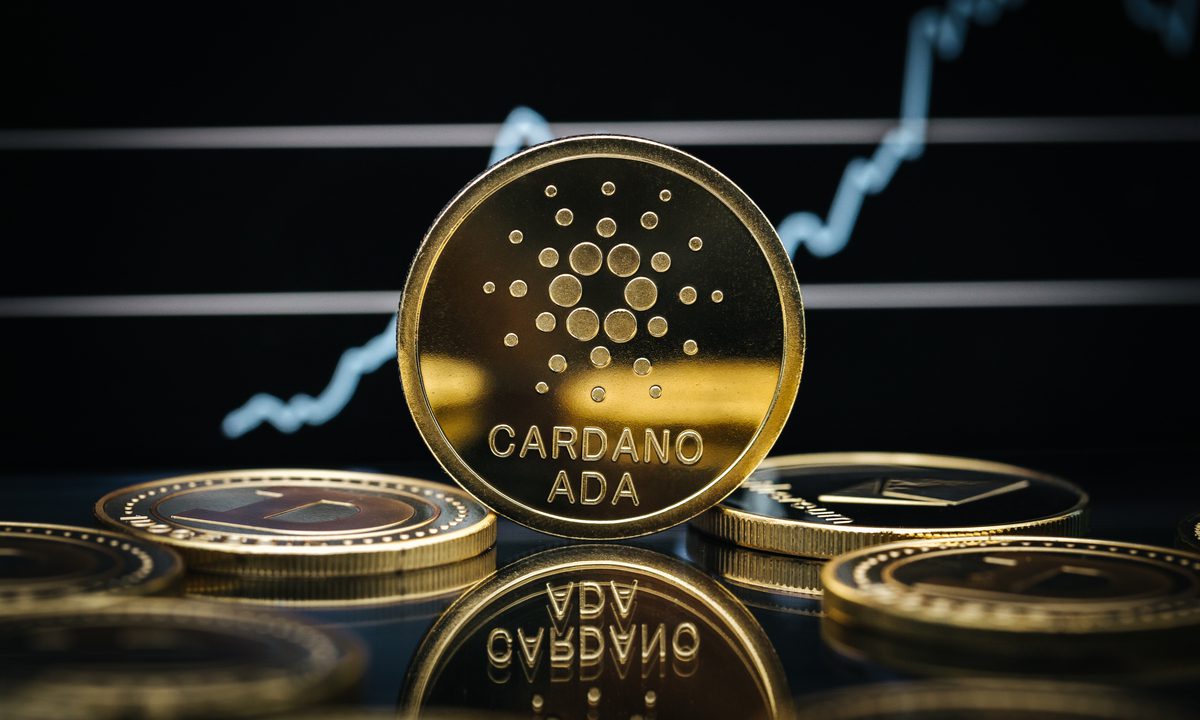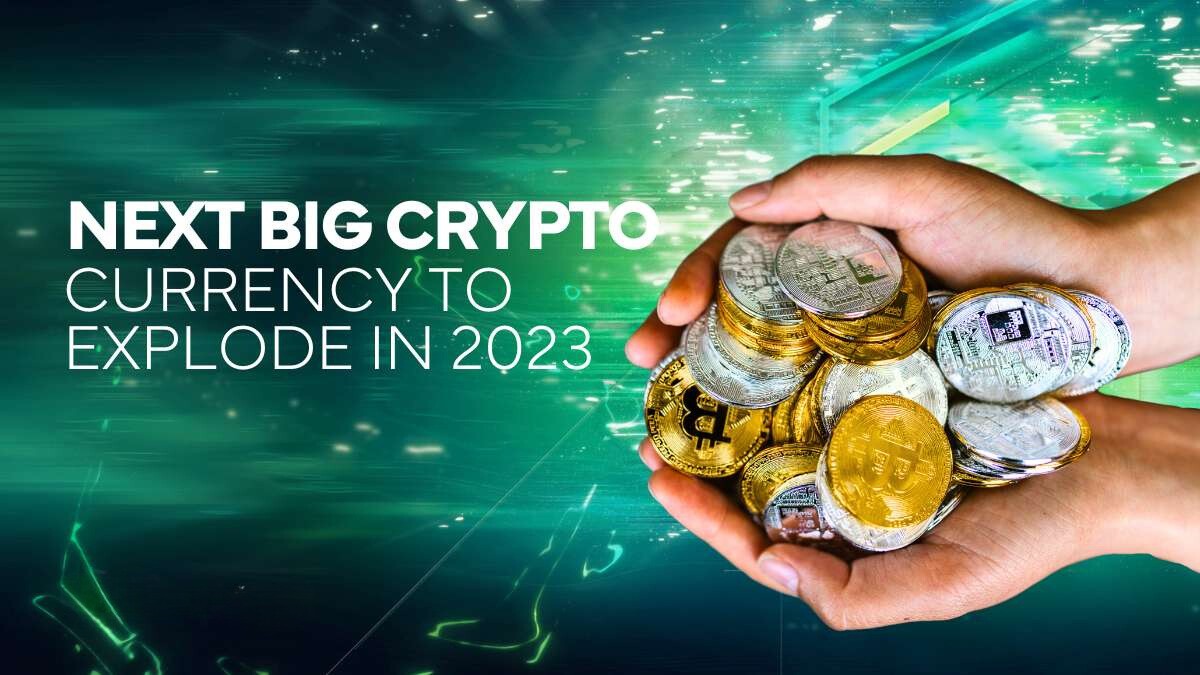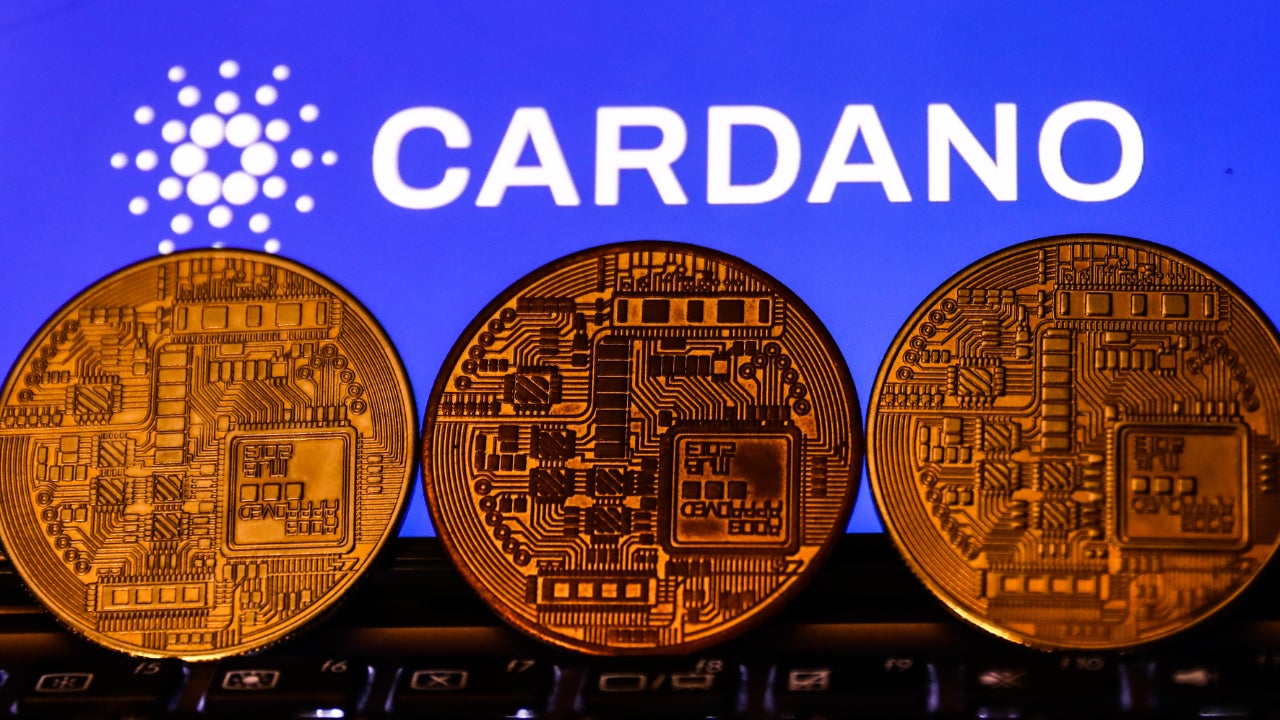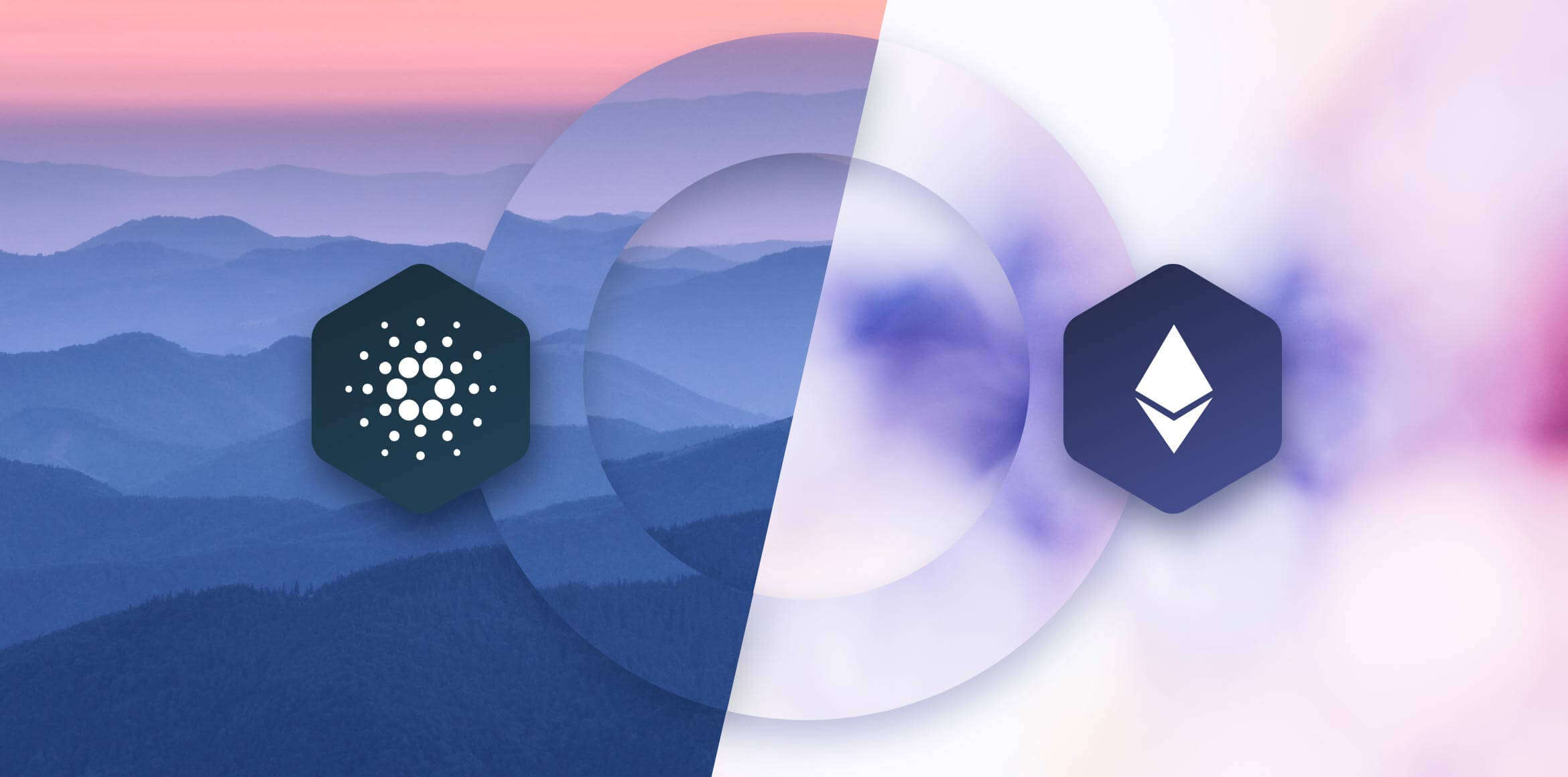Introduction
Welcome to the world of blockchain and the exciting advancements it has brought to the field of digital currencies and decentralized systems. One of the emerging players in this space is Cardano, a platform that aims to revolutionize the way transactions are conducted and verified. In this article, we will explore what exactly blockchain is and delve into the specifics of Cardano’s blockchain technology.
Blockchain, in simple terms, is a distributed ledger that records transactions across multiple computers or nodes. It operates on a decentralized network, making it highly secure and resistant to tampering. Transactions on a blockchain are verified by a consensus mechanism, taking away the need for intermediaries such as banks or governments. This technology has the potential to disrupt various industries by providing transparent, secure, and efficient methods for conducting transactions.
Cardano, on the other hand, is not simply another cryptocurrency like Bitcoin or Ethereum. It is a comprehensive platform that combines cutting-edge research with advanced engineering principles to create a secure and scalable blockchain network. Developed by a team of experts in academia and the tech industry, Cardano aims to address the limitations of existing blockchain platforms and build a sustainable ecosystem that can adapt to the evolving needs of users and organizations.
So, why should you be interested in Cardano? The answer lies in its innovative approach to blockchain technology. Cardano is designed to be a fully decentralized and scalable platform that can support a wide range of applications and services. Its development is driven by rigorous scientific research, ensuring that the platform is built on solid foundations – both in terms of the technology it uses and the governance principles it follows.
In the following sections, we will take a closer look at how Cardano’s blockchain technology works, what sets it apart from other platforms, and the security measures it incorporates to protect user transactions. We will also explore its unique consensus algorithm and the support it provides for smart contracts. Furthermore, we will discuss Cardano’s native currency, Ada, and the future developments the platform has in store.
So, without further ado, let’s dive into the fascinating world of Cardano and uncover the potential it holds for shaping the future of blockchain technology.
What is Blockchain?
Blockchain is a revolutionary technology that has taken the world by storm. At its core, it is a decentralized and immutable ledger that records transactions across multiple computers or nodes. Rather than relying on a central authority, such as a bank or government, to verify and validate transactions, blockchain operates on a network of computers that work collaboratively to maintain a shared database.
So how does blockchain work? Each transaction is bundled into a block, which is then added to the existing chain of blocks, forming a chronological record of all past transactions. Each block contains a unique identifier, a timestamp, and a digital fingerprint called a hash, which ensures the integrity of the data. Once a block is added to the blockchain, it becomes virtually impossible to modify or tamper with the information it contains.
This distributed nature of blockchain makes it highly secure and transparent. Since the ledger is replicated across multiple nodes, there is no single point of failure or vulnerability. If one node goes down or behaves maliciously, the network still remains operational as other nodes have a copy of the ledger. This also eliminates the need for intermediaries, like banks or governments, to validate transactions, thereby reducing costs and increasing efficiency.
Blockchain technology also introduces the concept of consensus mechanisms to verify transactions. Consensus mechanisms ensure that all participants in the network agree on the state of the ledger, preventing double-spending or fraudulent activities. There are various consensus algorithms, such as Proof of Work (PoW) and Proof of Stake (PoS), each with its own unique approach to maintaining consensus.
Blockchain technology has expanded beyond just cryptocurrencies and is now being explored for a wide range of applications. It has the potential to revolutionize industries like finance, supply chain management, healthcare, and voting systems by offering greater transparency, security, and efficiency.
In the next sections, we will delve deeper into Cardano’s blockchain technology and see how it builds upon the fundamental principles of blockchain to provide a secure and scalable platform for decentralized applications.
What is Cardano?
Cardano is a blockchain platform that goes beyond mere cryptocurrency functionality. It is a sophisticated ecosystem that utilizes advanced blockchain technology to offer a secure and scalable platform for the development of decentralized applications. Cardano aims to bring about positive change by combining academic research, peer-reviewed protocols, and rigorous engineering principles.
Developed by a team of experts and engineers from around the world, Cardano places a strong emphasis on scientific research and formal methods. It takes a scientific approach to building blockchain solutions, ensuring that every aspect of the platform is thoroughly and rigorously evaluated.
One of the key aims of Cardano is to enable the creation of a sustainable and inclusive economy. By leveraging blockchain technology, Cardano seeks to provide financial services to individuals and communities that are currently excluded from the traditional financial system. It aims to bring banking services to the unbanked and underbanked populations by offering secure and accessible financial tools.
Cardano’s goal is to create a platform that is capable of handling the complexity of real-world applications while being scalable, secure, and sustainable. By utilizing a layered architecture, Cardano separates the ledger, computing, and settlement layers, allowing for flexibility and improved performance. This modular approach enables Cardano to evolve and adapt to meet the changing requirements of its users.
In addition to its technical prowess, Cardano is also distinguished by its governance model. It aims to be a self-sustaining ecosystem that is driven by community participation and decentralized decision-making. Stakepool operators and Cardano holders have the ability to participate in the platform’s governance by proposing and voting on changes and updates to the protocol.
Cardano’s native cryptocurrency, Ada, is an integral part of the platform. Ada is used for various purposes within the Cardano ecosystem, such as paying for transactions, participating in the platform’s governance, and as a medium of exchange within decentralized applications built on Cardano.
With its scientific approach, focus on inclusivity, and commitment to sustainability, Cardano is positioning itself as a leading blockchain platform that provides a solid foundation for the development of decentralized applications and the creation of a fair and transparent financial ecosystem.
Why Cardano?
Cardano offers several compelling reasons why it stands out in the crowded blockchain space. Let’s explore why Cardano is gaining traction and why it is a platform worth paying attention to.
First and foremost, Cardano places a strong emphasis on academic research and peer-reviewed protocols. By combining scientific rigor with blockchain technology, Cardano aims to provide a solid and reliable foundation for building decentralized applications. This scientific approach ensures that Cardano’s technology is thoroughly tested and vetted, resulting in a platform that is both secure and robust.
Another reason to choose Cardano is its focus on scalability. The platform utilizes a layered architecture that separates the different aspects of blockchain functionality. This modular design allows for the independent development and optimization of each layer, making it easier to scale the platform as adoption and usage increase. By addressing the scalability challenges faced by other blockchain platforms, Cardano aims to offer a solution that can handle the demands of real-world applications.
Cardano is also unique in its approach to governance. The platform strives to be decentralized not only in terms of its underlying technology but also in its decision-making processes. Through a voting system, stakeholders have a say in the development and direction of Cardano. This democratic governance model ensures that decisions are made collectively, with the best interests of the community in mind, making Cardano a truly community-powered platform.
When it comes to sustainability, Cardano aims to lead the way. By combining blockchain technology with a focus on environmental sustainability, the platform seeks to minimize its carbon footprint. This is achieved through the Ouroboros protocol, Cardano’s energy-efficient consensus algorithm. By utilizing a Proof of Stake mechanism, Cardano consumes significantly less energy compared to platforms that rely on energy-intensive mining processes.
Interoperability is another area where Cardano shines. The platform is designed to enable seamless integration with existing systems and networks. This means that developers can leverage Cardano’s blockchain technology while still benefiting from existing infrastructure and legacy systems. This interoperability makes Cardano an attractive choice for enterprises and organizations looking to adopt blockchain technology without disrupting their existing operations.
Finally, Cardano’s commitment to inclusivity sets it apart. The platform aims to provide financial services to underserved populations, offering banking solutions to the unbanked and underbanked around the world. By utilizing blockchain technology, Cardano seeks to create a more inclusive and accessible financial ecosystem, empowering individuals and communities that have been traditionally excluded from the global financial system.
With its scientific approach, scalability, decentralized governance, sustainability, interoperability, and commitment to inclusivity, Cardano is positioning itself as a leading blockchain platform that addresses the challenges faced by existing solutions while offering a solid foundation for the development of decentralized applications.
Cardano’s Blockchain Technology
Cardano’s blockchain technology is centered around creating a secure and scalable platform for decentralized applications. It aims to leverage the advantages of blockchain while addressing the limitations and challenges faced by existing platforms. Let’s delve into the specific features and components that make up Cardano’s blockchain technology.
One of the key aspects of Cardano’s blockchain is its layered architecture. The platform is divided into distinct layers, each with its own specific functionality. This modular approach allows for flexibility and scalability, making it easier to adapt and upgrade individual components without disrupting the entire system. The layers include the Cardano Settlement Layer (CSL) for handling ADA transactions and the Cardano Computation Layer (CCL) for executing smart contracts and decentralized applications.
Cardano also incorporates a unique consensus algorithm called Ouroboros. This energy-efficient proof-of-stake algorithm ensures the security and integrity of the network by selecting a leader to create a new block in a deterministic and fair manner. This consensus mechanism eliminates the need for energy-intensive mining, significantly reducing the carbon footprint and making Cardano a more environmentally sustainable platform.
Another notable feature of Cardano’s blockchain technology is its focus on formal methods and peer-reviewed protocols. The platform’s development is rooted in scientific research, and all changes and updates to the protocol must go through a rigorous peer-review process. This rigorous approach ensures that Cardano’s technology is robust, reliable, and mathematically sound, enhancing the platform’s security and reducing the potential for vulnerabilities.
Cardano also places a strong emphasis on interoperability. The platform is designed to seamlessly communicate and integrate with existing systems and networks. This means that developers can leverage Cardano’s blockchain technology while still benefiting from their investments in legacy systems. Interoperability opens up a wide array of possibilities for enterprises and organizations to adopt blockchain technology without disrupting their existing operations.
Additionally, Cardano’s blockchain technology incorporates a treasury system. A portion of the transaction fees collected on the network is allocated to a treasury, which is used to fund development, research, and other initiatives that aim to enhance the Cardano ecosystem. This treasury system ensures the sustainable growth and long-term viability of Cardano while allowing the community to have a say in how the funds are allocated.
Through its layered architecture, energy-efficient consensus algorithm, focus on formal methods, interoperability, and treasury system, Cardano’s blockchain technology sets it apart from other platforms. These features make Cardano a secure, scalable, and sustainable platform for the development of decentralized applications, paving the way for the future of blockchain technology.
How Does Cardano’s Blockchain Work?
Cardano’s blockchain is built on a robust and innovative technology stack that aims to offer a secure and efficient platform for decentralized applications. Let’s explore how Cardano’s blockchain works and the key components that enable its functionality.
At the core of Cardano’s blockchain is the separation of its ledger into two distinct layers: the Cardano Settlement Layer (CSL) and the Cardano Computation Layer (CCL). The CSL is responsible for handling the transfer of ADA, the native cryptocurrency of Cardano, between users. On the other hand, the CCL is dedicated to executing smart contracts and decentralized applications.
The Cardano Settlement Layer utilizes the Ouroboros consensus algorithm, a proof-of-stake mechanism that ensures the secure validation of transactions on the network. Ouroboros selects a leader, known as a slot leader, in a deterministic and fair manner to create new blocks. This consensus algorithm is designed to be highly secure and energy-efficient, eliminating the need for energy-intensive mining processes.
The Cardano Computation Layer handles the execution of smart contracts and decentralized applications through its virtual machine known as the Cardano Virtual Machine (CVM). The CVM is a sandboxed environment where developers can write and deploy smart contracts using various programming languages. By having a dedicated layer for computation, Cardano ensures scalability and flexibility in running sophisticated applications.
Cardano’s blockchain also incorporates a system of sidechains and the Cardano Improvement Proposals (CIPs) process. Sidechains allow for the development and testing of new features and functionalities without affecting the main chain. This enables continuous innovation and the ability to upgrade the Cardano ecosystem. The CIPs process ensures that changes and updates to the protocol go through a rigorous peer-review process, enhancing the security and reliability of the platform.
Another crucial aspect of Cardano’s blockchain is its focus on interoperability. The platform is designed to be compatible with existing systems and networks, enabling seamless integration with legacy infrastructures. This interoperability opens up a wide range of possibilities for developers and enterprises to leverage Cardano’s technology without disrupting their current operations.
Furthermore, Cardano incorporates a treasury system that allocates a portion of the transaction fees collected on the network to a fund. This treasury is used to support the ongoing development and enhancement of the Cardano ecosystem, ensuring its sustainable growth and driving innovation in the platform.
By leveraging the layered architecture, the Ouroboros consensus algorithm, the Cardano Virtual Machine, sidechains, the CIPs process, interoperability, and the treasury system, Cardano’s blockchain provides a secure, scalable, and flexible platform for developers and users to build and deploy decentralized applications, opening up exciting opportunities for the future of blockchain technology.
What Sets Cardano Apart?
Cardano distinguishes itself from other blockchain platforms through its unique features and approach. Let’s explore what sets Cardano apart and makes it a standout player in the blockchain space.
Scientific Approach: Cardano stands out for its scientific approach to blockchain development. It relies on academic research and peer-reviewed protocols to ensure that every aspect of the platform is thoroughly evaluated. This scientific rigor enhances the security, reliability, and scalability of Cardano’s blockchain, providing a solid foundation for building decentralized applications.
Layered Architecture: Cardano’s layered architecture is another standout feature. By separating the platform into two distinct layers – the Cardano Settlement Layer (CSL) and the Cardano Computation Layer (CCL) – Cardano offers scalability, flexibility, and modularity. This design allows for independent upgrades and improvements to each layer, ensuring that the platform can evolve and adapt to meet the changing needs of users.
Energy Efficiency: Cardano’s choice of the Ouroboros consensus algorithm makes it a more environmentally friendly blockchain platform. Ouroboros relies on a proof-of-stake mechanism, which consumes significantly less energy compared to the energy-intensive mining processes used by other platforms. This energy efficiency aligns with Cardano’s commitment to sustainability and reducing its carbon footprint.
Interoperability: Cardano addresses the challenge of interoperability by creating a platform that seamlessly integrates with existing systems and networks. This means that developers can leverage Cardano’s blockchain technology without disrupting their current operations. The ability to work alongside legacy systems opens up a wide range of possibilities for enterprises and organizations looking to adopt blockchain technology.
Decentralized Governance: Cardano’s innovative approach to governance sets it apart from many other blockchain platforms. The platform aims to be self-governed, allowing all stakeholders to participate in decision-making processes. Through a voting system, stakeholders can propose and vote on changes to the protocol, ensuring that the platform’s development aligns with the interests and needs of the community.
Focus on Inclusivity: Cardano places a strong emphasis on inclusivity, aiming to provide financial services to underserved populations. By leveraging blockchain technology, Cardano aims to empower the unbanked and underbanked around the world, offering them access to secure and inclusive financial tools. This focus on inclusivity reflects Cardano’s commitment to creating a fair and accessible financial ecosystem.
Cardano’s scientific approach, layered architecture, energy efficiency, interoperability, decentralized governance, and focus on inclusivity are the key factors that set it apart from other blockchain platforms. These features make Cardano an attractive choice for developers, enterprises, and communities looking for a secure, scalable, and sustainable blockchain solution.
What Makes Cardano’s Blockchain Secure?
Security is a critical aspect of any blockchain platform, and Cardano takes several measures to ensure the utmost security for its users. Let’s explore the key elements that contribute to the security of Cardano’s blockchain.
Peer-Reviewed Protocols: Cardano distinguishes itself by basing its development on academic research and rigorous peer-reviewed protocols. This scientific approach ensures that every aspect of Cardano’s blockchain is thoroughly tested and scrutinized, reducing the potential for vulnerabilities and enhancing the platform’s security.
Ouroboros Consensus Algorithm: Cardano’s Ouroboros consensus algorithm plays a significant role in securing the blockchain. Ouroboros utilizes a proof-of-stake mechanism that ensures the fair and secure validation of transactions. By selecting a leader to create a new block in a deterministic and fair manner, Ouroboros eliminates the need for energy-intensive mining processes, significantly reducing the risk of attacks that can compromise the blockchain’s security.
Layered Architecture: Cardano’s layered architecture, dividing the platform into the Settlement Layer (CSL) and the Computation Layer (CCL), contributes to its security. By separating the layers, Cardano can isolate and protect critical components, reducing the risk of vulnerabilities spreading across the entire network. This modular design allows for separate upgrades and maintenance without disrupting the core functionality of the blockchain.
Formal Methods and Peer Review: Cardano places great importance on formal methods, ensuring mathematical verification and validation of its protocols. The platform’s development undergoes rigorous peer review, enabling experts to analyze and identify any potential weaknesses or vulnerabilities. This meticulous approach enhances the security of Cardano’s blockchain by eliminating potential flaws and weaknesses in the system.
Decentralization: Cardano’s commitment to decentralization plays a crucial role in its security. By operating on a decentralized network, Cardano eliminates the risk of a single point of failure. With no central authority or single controlling entity, the blockchain becomes more resilient to attacks and manipulation, ensuring the integrity and security of transactions and data stored on the network.
Regular Auditing and Upgrades: Cardano continuously prioritizes security by conducting regular audits and implementing necessary upgrades. The platform closely monitors potential vulnerabilities and proactively addresses them through regular security audits, ensuring its resilience against emerging threats. By staying at the forefront of security best practices, Cardano can continuously improve and enhance the security of its blockchain.
Overall, the combination of peer-reviewed protocols, the Ouroboros consensus algorithm, layered architecture, formal methods and peer review, decentralization, regular auditing, and proactive upgrades makes Cardano’s blockchain a highly secure platform. These measures, combined with the platform’s focus on scientific research and thorough scrutiny, provide users with a secure environment for conducting transactions and building decentralized applications.
Cardano’s Consensus Algorithm
Consensus algorithms play a crucial role in ensuring the security and integrity of a blockchain network. Cardano utilizes a unique consensus algorithm called Ouroboros, which sets it apart from other blockchain platforms. Let’s explore how Cardano’s Ouroboros consensus algorithm works and the benefits it brings to the platform.
Ouroboros is a proof-of-stake (PoS) consensus algorithm that secures the Cardano blockchain. Unlike proof-of-work (PoW) algorithms that require miners to solve complex mathematical problems, Ouroboros selects a leader to create a new block in a deterministic and fair manner based on the amount of stake they hold in the network. This leader, known as a slot leader, is responsible for minting new blocks and validating transactions.
The Ouroboros algorithm operates in epochs, which are divided into time slots. Each epoch consists of a fixed number of slots, and each slot represents a fixed period of time. The slot leaders for each epoch are determined in advance to ensure fairness and prevent manipulation. Slot leaders produce blocks in their assigned slots, and as they do, they extend the chain of blocks, formulating the blockchain.
A crucial aspect of the Ouroboros algorithm is its security. The algorithm ensures the integrity of the blockchain by requiring each block to reference the previous block, creating a chain of interconnected blocks. Any attempt to tamper with the contents of a block or insert a fraudulent transaction would require a substantial amount of computing power and stake, making it extremely difficult and economically infeasible to attack the network.
Another key advantage of the Ouroboros algorithm is its energy efficiency. Unlike PoW algorithms that rely on energy-intensive mining processes, Ouroboros operates on a proof-of-stake model, significantly reducing the energy consumption. This energy efficiency aligns with Cardano’s commitment to sustainability and reduces the environmental impact of the blockchain.
Ouroboros also incorporates a system of incentives and rewards for slot leaders and stakeholders. Slot leaders are rewarded for their participation and successful block creation, while stakeholders receive rewards based on the amount of stake they hold in the network. These rewards encourage active participation and stakeholder engagement, fostering a secure and dynamic ecosystem.
Cardano recognizes that the consensus algorithm is a critical component of its blockchain’s security and sustainability. As a result, the Ouroboros algorithm continuously undergoes rigorous research, peer review, and improvement. Cardano works closely with the academic community to enhance the algorithm, keeping up with the latest advances in consensus protocols.
Overall, Cardano’s Ouroboros consensus algorithm offers a secure, energy-efficient, and sustainable mechanism for validating transactions and maintaining the integrity of the blockchain. By combining rigorous research, fair selection of slot leaders, energy efficiency, and incentivized participation, Cardano ensures a robust and reliable consensus algorithm that serves as the foundation of its blockchain platform.
How Cardano Supports Smart Contracts
Smart contracts are a fundamental aspect of blockchain technology, enabling the creation and execution of self-executing contracts without the need for intermediaries. Cardano is no exception and provides a robust framework for the development and deployment of smart contracts. Let’s explore how Cardano supports smart contracts and the unique features it offers.
Cardano’s smart contract functionality is facilitated by the Cardano Computation Layer (CCL), which is specifically dedicated to executing smart contracts and decentralized applications. Within the CCL, the Cardano Virtual Machine (CVM) serves as the execution environment for smart contracts written on the Cardano blockchain.
The Cardano Virtual Machine (CVM) is designed to be a highly secure and scalable environment for running smart contracts. It is built to support multiple programming languages, allowing developers to write smart contracts in a language they are familiar with. Currently, Cardano supports Plutus, a domain-specific language (DSL), for developing smart contracts.
Cardano’s approach to smart contracts is driven by a formal semantics framework. This means that the language used for writing smart contracts has a well-defined syntax and semantics, ensuring predictability and reducing the chance of errors or vulnerabilities. By relying on formal methods, Cardano provides a solid foundation for secure and reliable smart contract execution.
Cardano also emphasizes the need for verification and validation. Smart contracts developed on Cardano’s platform can undergo rigorous testing and verification processes to ensure their correctness and reliability. This includes techniques such as formal verification, where mathematical proofs are used to verify the properties of smart contracts, minimizing the risk of bugs, vulnerabilities, and unintended behaviors.
One of the unique features of Cardano’s smart contract support is the ability to introduce governance and flexible rule settings. This means that smart contracts on Cardano can have customizable rules and conditions, allowing for the implementation of complex workflows and automation. Smart contracts can be designed to adapt to changing circumstances, making them more versatile and applicable in various real-world scenarios.
Furthermore, Cardano aims to facilitate interoperability between different blockchain platforms. This includes enabling cross-chain communication and the ability to interact with smart contracts from other networks. This interoperability expands the capabilities of smart contracts on Cardano, allowing for seamless integration with other decentralized applications and networks.
Overall, Cardano provides a robust and secure platform for the development and execution of smart contracts. With its Cardano Virtual Machine, support for formal semantics, emphasis on verification and validation, customizable rules, and interoperability, Cardano offers developers a comprehensive and flexible ecosystem to build sophisticated smart contracts that can revolutionize various industries.
Cardano’s Currency: Ada
Ada is the native cryptocurrency of the Cardano blockchain platform. It plays a vital role in facilitating transactions, participating in the governance of the network, and serves as a medium of exchange within the Cardano ecosystem. Let’s explore the key features and benefits of Cardano’s currency, Ada.
Named after Ada Lovelace, a 19th-century mathematician and writer, Ada is designed to be a robust and secure digital currency. It operates within the Cardano Settlement Layer (CSL), where it serves as a means of value transfer and payment for transactions conducted on the blockchain.
One of the primary advantages of Ada lies in its scalability. Unlike some other cryptocurrencies that face limitations due to slow transaction processing times and high fees, Cardano has focused on optimizing the performance of its blockchain. Through extensive research and innovation, Cardano has built a highly efficient and scalable platform capable of processing a significant number of transactions quickly and cost-effectively.
Ada’s functionality extends beyond being a medium of exchange. It also plays a crucial role in the governance of the Cardano network. Ada holders can actively participate in the decision-making processes of the platform by voting on proposals for protocol upgrades, improvements, and other governance matters. This decentralized governance model ensures that stakeholders have a voice in shaping the future direction of Cardano.
Cardano’s approach to governance is based on a principle known as liquid democracy. This system allows Ada holders to vote directly or delegate their voting power to trusted individuals or organizations. By empowering stakeholders with voting rights, Cardano promotes inclusivity and community-driven decision-making, enhancing the platform’s democratic nature.
In addition to its functionality within the blockchain ecosystem, Ada is also designed to be a secure and robust digital asset. Cardano places a strong emphasis on security features and has implemented advanced cryptographic measures to safeguard Ada holdings. This helps protect users against potential risks and ensures the integrity of their digital assets.
Furthermore, Cardano works to foster the widespread adoption and use of Ada. The platform aims to build partnerships and collaborate with various industries to promote the utilization of Ada as a means of payment and value transfer. As more organizations and individuals accept Ada as a form of currency, its utility and value are likely to increase, further strengthening the ecosystem.
Ada is traded on various cryptocurrency exchanges and offers liquidity for those looking to buy or sell the currency. Its presence on multiple exchanges provides accessibility and convenience for users worldwide to engage with Ada and contribute to the growth and liquidity of the market.
In summary, Ada serves as a scalable, secure, and versatile digital currency within the Cardano ecosystem. Its utility extends beyond transactions, with active participation in governance and a focus on security. As Cardano strives for adoption and partnerships, Ada’s value and significance are expected to grow, further solidifying its position as a key player in the digital currency landscape.
The Future of Cardano on Blockchain
Cardano’s journey in the blockchain space is driven by a vision for innovation, sustainability, and inclusivity. As the platform continues to evolve, several key developments and advancements can be expected in the future.
One of the primary areas of focus for Cardano is scalability. As adoption and usage of the platform increase, Cardano aims to further enhance its scalability through continuous research and improvements. By addressing scalability challenges, Cardano strives to accommodate a greater number of transactions and users, making the platform more accessible and efficient.
Interoperability is another aspect that holds promise for Cardano’s future. The ability to seamlessly interact and integrate with other blockchain networks and protocols can unlock new possibilities and foster collaborations between different decentralized ecosystems. Cardano aims to establish strong cross-chain communication, enabling the movement of value and data between diverse networks.
Cardano’s commitment to sustainability and environmental consciousness will also continue to drive its future development. With the Ouroboros consensus algorithm’s energy efficiency and ongoing research into environmentally friendly solutions, Cardano seeks to minimize its environmental impact while providing a secure and scalable platform.
Moreover, Cardano’s governance model will evolve and further empower stakeholders in shaping the platform’s future. Through community involvement and decentralized decision-making processes, Cardano aims to create a network that reflects the diverse needs and perspectives of its users. This inclusive approach ensures that Cardano remains adaptable and responsive to the demands of its growing community.
Cardano is also poised to expand its real-world applications and impact various industries. By providing a secure and scalable platform for decentralized applications, Cardano offers solutions to challenges faced by industries such as finance, supply chain, healthcare, voting systems, and more. As developers and enterprises recognize the potential of Cardano, the range and diversity of applications built on the platform are expected to grow.
Furthermore, ongoing research and development efforts will drive innovation within the Cardano ecosystem. Cardano seeks to push the boundaries of blockchain technology by exploring emerging trends, such as privacy features, zero-knowledge proofs, and advanced smart contract capabilities. Continual research ensures that Cardano remains at the forefront of technological advancements in the blockchain space.
Overall, the future of Cardano on the blockchain holds immense potential. With a focus on scalability, interoperability, sustainability, inclusive governance, real-world applications, and ongoing research and development, Cardano is poised to make significant strides in revolutionizing industries and shaping the future of blockchain technology.
Conclusion
Cardano stands out as a pioneering blockchain platform that combines scientific research, innovative technology, and a commitment to sustainability and inclusivity. Through its rigorous approach to development, Cardano offers a secure, scalable, and future-proof ecosystem for decentralized applications and transactions.
With its unique layered architecture, Cardano provides flexibility, modularity, and scalability, allowing the platform to adapt to the evolving needs of users and industries. By utilizing the Ouroboros consensus algorithm, Cardano ensures the integrity and security of its blockchain, while significantly reducing energy consumption compared to other platforms.
Cardano’s emphasis on scientific research and formal methods demonstrates its dedication to building a reliable and robust platform. By incorporating formal semantics, extensive peer review, and regular audits, Cardano aims to minimize vulnerabilities and ensure the security of the blockchain.
The governance model of Cardano empowers stakeholders, enabling them to actively participate in decision-making processes through voting and delegated voting rights. This democratic approach ensures the platform’s direction aligns with the interests of its community while fostering inclusivity and participation.
A key strength of Cardano lies in its commitment to interoperability, allowing seamless integration with existing systems and networks. This opens up numerous possibilities for collaboration and the widespread adoption of blockchain technology across various industries.
Looking ahead, Cardano’s focus on scalability, interoperability, sustainability, inclusivity, real-world applications, and ongoing research paves the way for a promising future. As the platform continues to evolve, Cardano is poised to revolutionize industries, drive innovation, and shape the landscape of blockchain technology.
In conclusion, Cardano’s scientific approach, layered architecture, energy efficiency, inclusive governance, commitment to interoperability, and focus on real-world applications make it a strong contender in the blockchain space. By combining these features, Cardano sets itself apart as a platform that offers security, scalability, and adaptability, paving the way for a more decentralized and accessible future.







